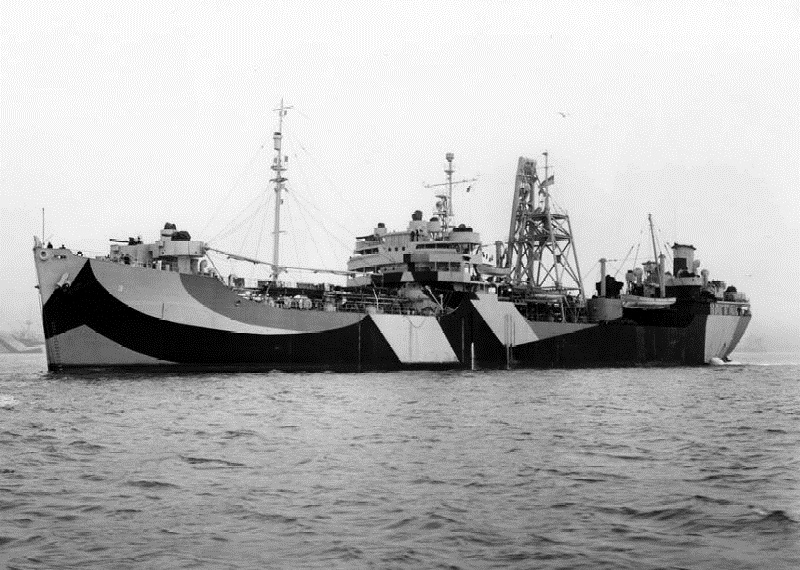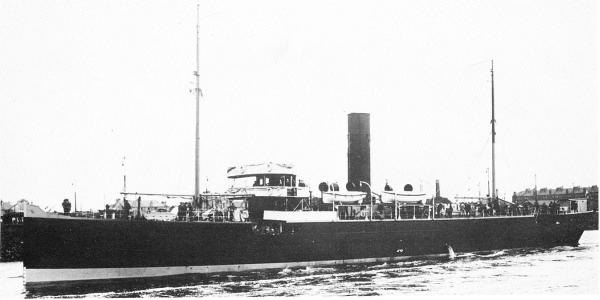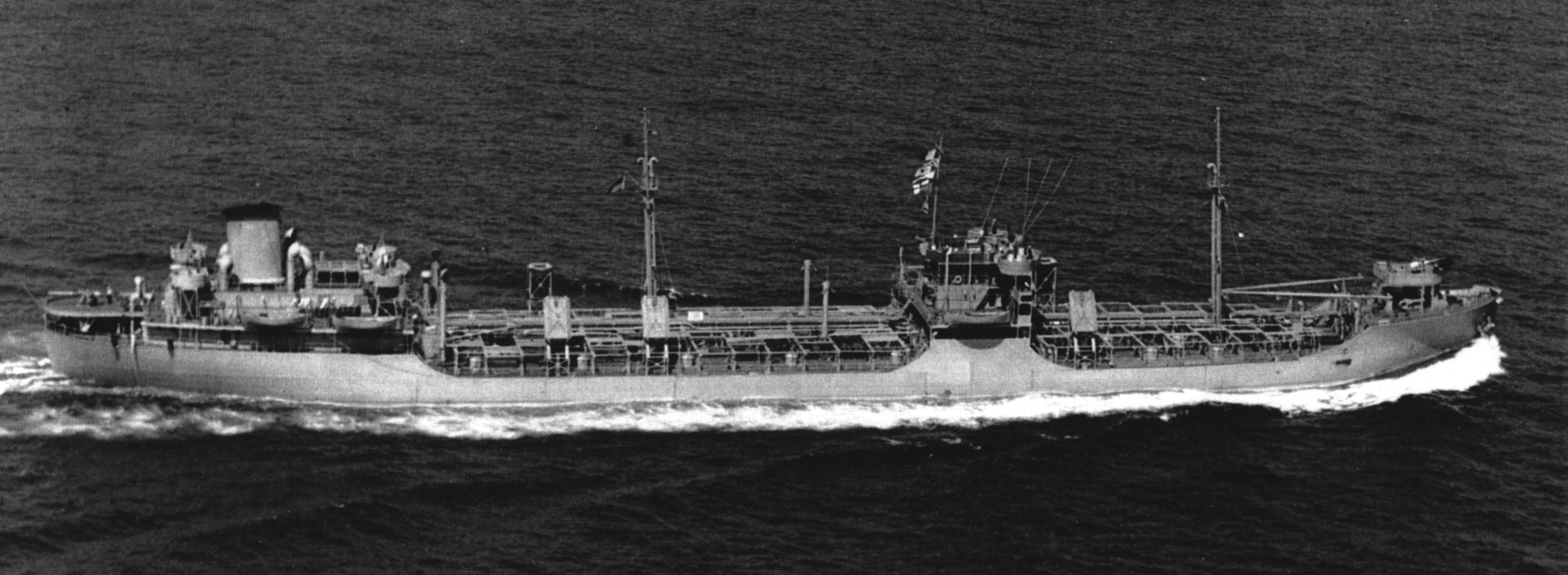|
List Of United States Navy Oilers
The following is a list of United States Navy oilers ( hull designations AO, AOR, AOE and AOT) Ship status is indicated as either currently active (including ready reserve), inactive or precommissioning Ships in the inactive category include only ships in the inactive reserve, ships which have been disposed from US service have no listed status. Ships in the precommissioning category include ships under construction or on order. Fleet Oilers (AO) ''Note: tonnages are given in naval light/full load displacement'' ''Arethusa'' ''Arethusa'' was built in Britain 1893 as the SS ''Luciline'' and was purchased in 1898, serving originally as a water carrier. In 1910 she was converted to carry fuel oil, mostly in support of destroyers: she thus became the US Navy's first oiler. With the new hull designation system of 1920 she was redesignated AO-7. * ''Kanawha'' class The Navy's first fuel ships designed and built as oilers, rather than colliers, the -class comprised two ships ... [...More Info...] [...Related Items...] OR: [Wikipedia] [Google] [Baidu] |
USNS Mispillion (T-AO-105) Refuels USS Leahy (CG-16) And USS Sample (FF-1048) In The Pacific Ocean On 1 December 1980 (6379174)
United States Naval Ship (USNS) is the prefix designation given to non- commissioned ships that are property of the United States Navy (USN). Definition United States Naval Ships are unarmed auxiliary support vessels owned by the U.S. Navy and operated in non-commissioned service by Military Sealift Command with a civilian crew. Some ships include a small military complement to carry out communication and special mission functions, or for force protection. In comparison, U.S. Navy ships commissioned into service have the designation " USS" and are armed, crewed by U.S. Navy personnel, and held in property by the United States Government. Additionally, the United States Naval Ships hull classification symbol begins with "T-" to denote its civilian crew. The USNS prefix can be assigned only while the ship is owned by the U.S. Navy. If, after being taken out of service, the ship is transferred to the Maritime Administration the prefix reverts to a civilian ship prefix such as ... [...More Info...] [...Related Items...] OR: [Wikipedia] [Google] [Baidu] |
Escort Carrier
The escort carrier or escort aircraft carrier (U.S. hull classification symbol CVE), also called a "jeep carrier" or "baby flattop" in the United States Navy (USN) or "Woolworth Carrier" by the Royal Navy, was a small and slow type of aircraft carrier used by the Royal Navy, the United States Navy, the Imperial Japanese Navy and Imperial Japanese Army Air Force in World War II. They were typically half the length and a third the displacement of larger fleet carriers, slower, more-lightly armed and armored, and carried fewer planes. Escort carriers were most often built upon a commercial ship hull, so they were cheaper and could be built quickly. This was their principal advantage as they could be completed in greater numbers as a stop-gap when fleet carriers were scarce. However, the lack of protection made escort carriers particularly vulnerable, and several were sunk with great loss of life. The light carrier (U.S. hull classification symbol CVL) was a similar concept to the ... [...More Info...] [...Related Items...] OR: [Wikipedia] [Google] [Baidu] |
Military Sea Transportation Service
Military Sealift Command (MSC) is an organization that controls the replenishment and military transport ships of the United States Navy. Military Sealift Command has the responsibility for providing sealift and ocean transportation for all US military services as well as for other government agencies. It first came into existence on 9 July 1949 when the Military Sea Transportation Service (MSTS) became solely responsible for the Department of Defense's ocean transport needs. The MSTS was renamed the Military Sealift Command in 1970. Military Sealift Command ships are made up of a core fleet of ships owned by the United States Navy and others under long-term-charter augmented by short-term or voyage-chartered ships. During a time charter MSC takes control of a merchant ship and operates it for the chartered amount of time. During this time the ship is crewed by civilian mariners and MSC pays for all expenses. Time chartered ships are not subject to inspections from foreign gover ... [...More Info...] [...Related Items...] OR: [Wikipedia] [Google] [Baidu] |
USNS Mission Buenaventura
SS ''Mission Buenaventura'' was a Type T2-SE-A2 tanker built for the United States Maritime Commission during World War II. After the war she was acquired by the United States Navy as USS ''Mission Buenaventura'' (AO-111). Later the tanker transferred to the Military Sea Transportation Service as USNS ''Mission Buenaventura'' (T-AO-111). The lead ship in her class of fleet oilers, she was named for Mission San Buenaventura located in Ventura, California. Operational history SS ''Mission Buenaventura'' was laid down 29 March 1944 under a Maritime Commission contract by Marinship Corporation, Sausalito, California; launched 28 May 1944; sponsored by Mrs. Fred W. Boole; and delivered 28 June 1944. Chartered to Deconhill Shipping Company, for operations, she spent the remainder of the War supporting the victorious Allied forces in the Pacific. She was returned to the Maritime Commission in March 1946 and on 30 March was laid up in the Maritime Commission Reserve Fleet at Mobile, Al ... [...More Info...] [...Related Items...] OR: [Wikipedia] [Google] [Baidu] |
Suamico-class Oiler
The ''Suamico'' class were a class of 25 United States Navy oilers during World War II. Built to the Maritime Commission T2-SE-A1 (''Suamico'' class), -A2 (''Escambia'' class) and -A3 (''Cohocton'') designs, they used turbo-electric transmission, obviating the need for reduction gearing which was a major issue in US mass-production shipbuilding. Construction The ''Suamico''s Just before the war the United States Maritime Commission had developed a standardized tanker design, the T2, which could be mass-produced in time of war, and militarized as needed for naval auxiliaries. The T2 was given sufficient engine power to attain , which the Navy considered the minimum required for a fleet oiler. The T2 and its variants (see ) however used conventional geared steam turbine propulsion, and with the massive expansion of US shipbuilding, a production bottleneck developed: the limited availability of the precision machinery needed to manufacture reduction gearing. The Sun Shipbuilding ... [...More Info...] [...Related Items...] OR: [Wikipedia] [Google] [Baidu] |
Military Sealift Command
Military Sealift Command (MSC) is an organization that controls the replenishment and military transport ships of the United States Navy. Military Sealift Command has the responsibility for providing sealift and ocean transportation for all US military services as well as for other government agencies. It first came into existence on 9 July 1949 when the Military Sea Transportation Service (MSTS) became solely responsible for the Department of Defense's ocean transport needs. The MSTS was renamed the Military Sealift Command in 1970. Military Sealift Command ships are made up of a core fleet of ships owned by the United States Navy and others under long-term-charter augmented by short-term or voyage-chartered ships. During a time charter MSC takes control of a merchant ship and operates it for the chartered amount of time. During this time the ship is crewed by civilian mariners and MSC pays for all expenses. Time chartered ships are not subject to inspections from foreign gover ... [...More Info...] [...Related Items...] OR: [Wikipedia] [Google] [Baidu] |
Distilling Ship
A distilling ship is a class of military ships, generally converted tankers, with the capability to convert salt water into fresh water. They were typically stationed at forward bases during conflict where they supported on-the-ground troops and front line naval units. Kleinschmidt still While steamships often used the heat in low-pressure steam exhausted from propulsion machinery to distill fresh water from seawater, that was relatively inefficient when the ship was not underway. Dr. R.V. Kleinschmidt developed a compression still while working at the Arthur D. Little Laboratories in Cambridge, Massachusetts. These stills were manufactured for the United States Navy by E. B. Badger and Sons of Boston. After these Kleinschmidt stills proved successful aboard diesel engined ships like submarines, destroyer escorts, and tank landing ships, several stills were placed aboard tankers built as distilling ships. Seawater enters the evaporation chamber through two heat exchangers. The e ... [...More Info...] [...Related Items...] OR: [Wikipedia] [Google] [Baidu] |
USS Cohocton
USS ''Cohocton'' (AO-101) was lead ship of her class of fleet oiler acquired by the United States Navy for use during World War II. She had the dangerous but necessary task of providing fuel to vessels in combat and non-combat areas. She served in the Pacific Ocean Theatre of operations late in the war. ''Cohocton'' was launched 28 June 1945 by Marinship Corp., Sausalito, California, under a Maritime Commission contract; sponsored by Mrs C. O. Day; commissioned 25 August 1945 and reported to the Pacific Fleet. End-of-war Pacific Theatre operations Cohocton sailed from San Francisco, California, on 5 September 1945 for Eniwetok, carrying ammunition and fresh water. She supported occupation forces in the Far East and western Pacific by carrying water from one port to another and serving as station water tanker. She called at Guam, Ulithi, Samar, Leyte, Yokosuka, Wakayama, and Kagoshima before arriving at Qingdao, China, on 10 January 1946, for station duty until 21 April. She retu ... [...More Info...] [...Related Items...] OR: [Wikipedia] [Google] [Baidu] |
Victoria (Australia)
Victoria is a state in southeastern Australia. It is the second-smallest state with a land area of , the second most populated state (after New South Wales) with a population of over 6.5 million, and the most densely populated state in Australia (28 per km2). Victoria is bordered by New South Wales to the north and South Australia to the west, and is bounded by the Bass Strait to the south (with the exception of a small land border with Tasmania located along Boundary Islet), the Great Australian Bight portion of the Southern Ocean to the southwest, and the Tasman Sea (a marginal sea of the South Pacific Ocean) to the southeast. The state encompasses a range of climates and geographical features from its temperate coastal and central regions to the Victorian Alps in the northeast and the semi-arid north-west. The majority of the Victorian population is concentrated in the central-south area surrounding Port Phillip Bay, and in particular within the metropolit ... [...More Info...] [...Related Items...] OR: [Wikipedia] [Google] [Baidu] |
Q-ship
Q-ships, also known as Q-boats, decoy vessels, special service ships, or mystery ships, were heavily armed merchant ships with concealed weaponry, designed to lure submarines into making surface attacks. This gave Q-ships the chance to open fire and sink them. The use of Q-ships contributed to the abandonment of cruiser rules restricting attacks on unarmed merchant ships and to the shift to unrestricted submarine warfare in the 20th century. They were used by the British Royal Navy and the German ''Kaiserliche Marine'' during the First World War and by the Royal Navy, the '' Kriegsmarine'', and the United States Navy during the Second World War (1939–45). Etymology Short for Queenstown in Ireland, as Haulbowline Dockyard in Cork Harbour was responsible for the conversion of many mercantile steamers to armed decoy ships in World War One, although the majority appear to have been converted in larger navy yards such as Devonport. Early uses of the concept In the 1670s, ... [...More Info...] [...Related Items...] OR: [Wikipedia] [Google] [Baidu] |
Chiwawa Class Oiler
The ''Chiwawa''-class oilers were United States Navy T3 Tanker oilers of the T3-S-A1 design built during World War II at Bethlehem Sparrows Point Shipyard of Sparrows Point, Maryland. The class consisted of five ships, all of which survived the war. All of the ships of the class initially were to be built for private companies, but the outset of World War II, the ships were transferred to the United States Maritime Commission and given new names. Later, when allocated to the U.S. Navy, they were renamed again. Often the ''Chiwawa'' class is seen as part of the ''Kennebec'' class. In some cases the ''Kennebec'' class is divided into three classes, the ''Kennebec'' class (AO-36 to AO-40, AO-48), the ''Mattaponi'' class (AO-41 to AO-44, AO-47) and the ''Chiwawa'' class. The first two classes were of the T2 and T2-A designs whereas the ''Chiwawa''s were of the T3-S-A1 design, mainly differing in having only a 7,000 shp engine and a top speed of 15.3 knots. Three of the ships — , ... [...More Info...] [...Related Items...] OR: [Wikipedia] [Google] [Baidu] |
T2 Tanker
The T2 tanker, or T2, was a class of oil tanker constructed and produced in large quantities in the United States during World War II. Only the T3 tankers were larger "navy oilers" of the period. Some 533 T2s were built between 1940 and the end of 1945. They were used to transport fuel oil, diesel fuel, gasoline and sometimes black oil-crude oil. Post war many T2s remained in use; like other hastily built World War II ships pressed into peacetime service, there were safety concerns. As was found during the war, the United States Coast Guard Marine Board of Investigation in 1952 stated that in cold weather the ships were prone to metal fatigue cracking, so were "belted" with steel straps. This occurred after two T2s, and , split in two off Cape Cod within hours of each other. ''Pendleton''s sinking is memorialized in '' The Finest Hours''. Engineering inquiries into the problem suggested the cause was poor welding techniques. It was found the steel (that had been successfully use ... [...More Info...] [...Related Items...] OR: [Wikipedia] [Google] [Baidu] |
_in_the_early_1920s.jpg)

.jpg)



